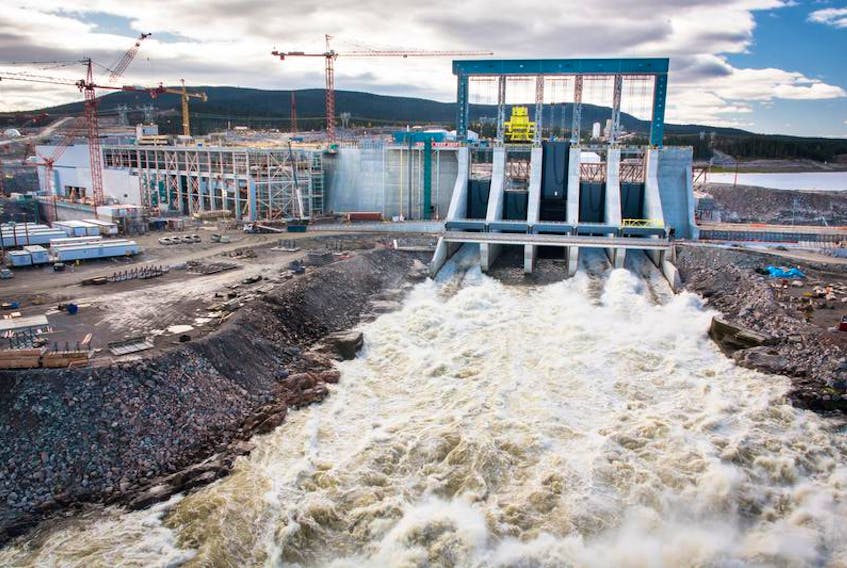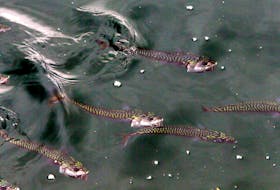OTTAWA, Ont. — The Parliamentary Budget Officer recently estimated that the federal government’s order of 15 warships could now cost taxpayers as much as $70 billion, up from an original estimate of $26 billion just four years ago. The eye-watering figure makes the order of 15 combatant ships — a “Type 26” frigate to be built by Irving Shipbuilding — potentially the largest single government expenditure in Canadian history. The costs will be spread over roughly 25 years, with the first ship slated for completion in the mid-2020s. In a salute to this great nation as we celebrate our 152nd year, the National Post compiled a number of one-off government purchases, from fighter jets to hydro dams, that have also come at fantastically high costs — some of which are getting more costly by the day.

Project: Halifax-class warships
Cost: $20.2 Billion
The contract to build a fleet of 12 frigates over 15 years eventually cost federal coffers $9.3 billion, according to estimates in the mid-1980s (or roughly $20 billion in today’s dollars). The now-defunct company MIL-Davie Shipbuilding, whose facility is now operated by Chantier Davie Canada, was awarded the contract. It blamed widespread cost overruns on government indecision, saying the feds proposed “50,000 design changes” to the frigates. In 2007 the government announced a roughly $4-billion retrofit program to modernize the fleet. The Halifax-class ships have been in operation since 1992.
Project Trans Mountain pipeline
Finance Minister Bill Morneau signed off on an agreement last summer to purchase the 1950s-era pipeline, effectively nationalizing the project. The decision came after the pipeline’s Houston-based owner, Kinder Morgan, froze all capital spending on the project and threatened to scrap it completely amid a host of legal challenges. Ottawa is now tasked with an expansion project that would nearly triple Trans Mountain’s capacity, expected to cost between $7.4 billion and $9.3 billion. However, more than a year of delays, new legal challenges, and worker shortages could cause costs to inflate, according to observers.

Project: CH-148 Cyclone helicopters
Cost: $7.6 billion
The Mulroney government in 1985 began a decades-long process to replace Canada’s aging Sea King fleet, a lumbering chopper used by Canadian forces since 1963. In 2004, Ottawa awarded a contract to Sikorsky Aircraft to build 28 Cyclone helicopters, after several governments through the years repeatedly cancelled or tacked on new orders, raising overall costs. The contract was initially estimated at $1.8 billion, but was later renegotiated at $7.6 billion, not including a $5.7-billion maintenance contract. The higher cost was in part due to design changes by the government, after a flaw in the gearbox of a model similar to the Cyclone was blamed for a 2009 crash by the Transportation Safety Board. Former Defence Minister Peter MacKay called the boondoggle “the worst procurement in the history of Canada.”

Project: Hibernia offshore oil platform
Cost: $4.3 billion
In 1993, soaring costs to build the oil platform off the shore of Newfoundland had reached the point that Gulf Oil, a 25 per cent owner in the project, was threatening to pull out. The federal government swooped in with $2.7 billion in federal loan guarantees (or $4.3 billion in today’s dollars), then later bought an 8.5 per cent stake in the project. The facility began generating cash years later, becoming one of the few major cash-generating investments made on behalf of taxpayers.

Project: Fighter-jet procurement bid
Cost: $19 billion (estimated)
Canada in December 2017 launched a bid to supply 88 new fighter jets to the Royal Canadian Air Force, and is expected to award a contract around 2022. Four companies are thought to be the frontrunners to win the estimated $19-billion bid, which could be fully rolled out by the early 2030s. Until then, Canada has opted to depend on a fleet of CF-18s purchased from Australia — a decision that could cost another $1.5 billion, according to a 2014 report by the Department of National Defence and the Canadian Forces.
Project: Muskrat Falls hydro dam
Cost: $6.4 billion
The Harper government announced it would offer $6.4 billion in loan guarantees for the Muskrat Falls hydro dam in 2012, offering at least some relief to a project that was already substantially over budget. Costs have ballooned by 40 per cent since then, to the tune of about $12.7 billion, including interest, prompting the Trudeau government to add another $2.9 billion in guaranteed financing to the project. A report on the dam released this week blamed cost overruns on a lack of transparency in carrying out construction contracts, among a long list of other factors.

Project: Harry DeWolf-class Arctic patrol vessels
Cost: $4.3 billion
In 2007 the federal government announced plans to procure between six and eight icebreaking warships, led by the Harry DeWolf class, for the Royal Canadian Navy. Costs for the full contract are currently set at $4.3 billion, including a 25-year maintenance contract. Construction of the vessels, which include several different models, were initially slated to begin around 2016 and 2017, but have been met with years-long delays. The Public Services and Procurement Canada website currently claims the first of six vessels will be completed this summer.
Project: Joint support ships
Cost: $3.4 billion (estimated)
In early 2016, the federal government awarded Seaspan’s Vancouver Shipyards the contract to build a pair of joint support ships (JSS), scheduled for completion in 2023 and 2025. The support ships allow for helicopter maintenance, limited sealift capability, and allow Canada’s naval fleets to remain at sea for longer stretches of time, according to a government website. Construction of the vessels began on June 15, 2018.
National Post
• Email: [email protected] | Twitter: jesse_snyder
Copyright Postmedia Network Inc., 2019









